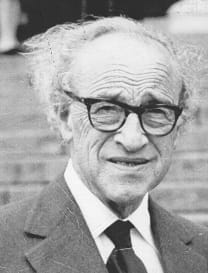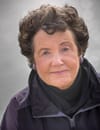Blood Sweat and Smears

Dr. Michael Gelfand, doyen of Southern Rhodesia’s medical community, much as we loved him, usually failed to notify us ahead of time of the deluge of urine specimens (or worse) that he was sending for analysis in conjunction with the latest publication he was working on.
Blood, Sweat and Smears
My grandfather’s neice, Celia Gorlen, now living in Jerusalem, got a degree in chemical engineering in Stockholm and worked as chemist in Oslo where she was born. She observes you “need good eyes, fine hands, a strong back and like to work alone” to make it in the field. Bench work runs in the family.
Blood, Sweat and Smears
I started out in a three year work-study program for medical technologists in the Public Health Laboratories on North Avenue in Salisbury in January 1964. The Laboratory adjoined the European Salisbury General Hospital. The street was lined with mature Jacaranda trees and there was a garden between the semi circular driveway and the thick hedge that enclosed it. And yet it was an austere sort of place, an imposing whitewashed double story building, each department of the laboratory being housed in separate rooms. I rotated through the different labs. Lectures by different pathologists were conducted two evenings a week.
There was not a lot of work. In those days, doctors relied on a thorough physical examination and history for a diagnosis using laboratory tests specifically for confirmation if in doubt in difficult cases.
But on occasion, interesting projects would come our way like poorly prepared blood smears from elephants sent in by the Department of Parks and Wildlife.
Dr. Michael Gelfand, the beloved doyen of the medical community, author of many books and my father’s mentor on his arrival in Rhodesia, had a habit of deluging us without warning with hundreds of urine samples (or worse) from some remote Shona village to study endemic parasitic infections.
But in the main, we were hard pressed to justify a day’s work, which allowed me time to dwell on the peculiarities and foibles of the personnel. Dr. Ken Gadd, the Director, was a small man with a ram rod straight back, that kept much to himself at the back of the biochemistry lab, doing his own independent research. As a government employee he was unable to express his political opinion but his wife more than made up for it. She was a member of the John Birch Society. Under him was Vance Carlisle, a Scot, with some sort of thyroid condition. I was always afraid when he was provoked that his eyes would actually pop out of their sockets. Nancy, was close to graduating with a Final in biochemistry. She was no nonsense, a devout Salvation Army member who wore Mary Jane shoes and no makeup and was anxious to get out and serve God. In the bacteriology department was John Emmanuel a Catholic, a small fat young man with a big motor cycle, mean and frustrated, left behind when his girl friend, Sheelin, was accepted at Cape Town University to study medicine. There was a wild unclean man, reportedly married to a Coloured, a lecher, who roamed the rooms incessantly and spooked me. I don’t think he did any work.
Most of us played hockey together, at the country club, like many of the staff of many businesses in the city. Afterwards we socialized over a cold Castle or Lion Lager.
Mrs. Hettie Leavis, a tiny middle-aged woman, was as far left in her persuasions as Dr. Gadd was to the right. She was in charge of haematology. She became my mentor. I learned to make the thinnest thin smears, the perfect size and thickness of thick smears, stain with our stains made from scratch, besides doing the routine blood counts. She taught me the stages of the reticuloendothelial and lymphatic systems. We searched under the microscope for the ring forms of the different malarias, and their moon shaped gametocytes, as well as filarias, trypanosoms and toxoplasms.
With my Bacteriology Atlas in hand I started out enthusiastically enough, hoping to check off bug after bug in quick succession. We made our own media from scratch and poured our own bacteriological plates, but there were precious few samples to plate. The big 37°C incubator housed just a handful of plates each evening. Mostly we reported “no growth” in the morning.
